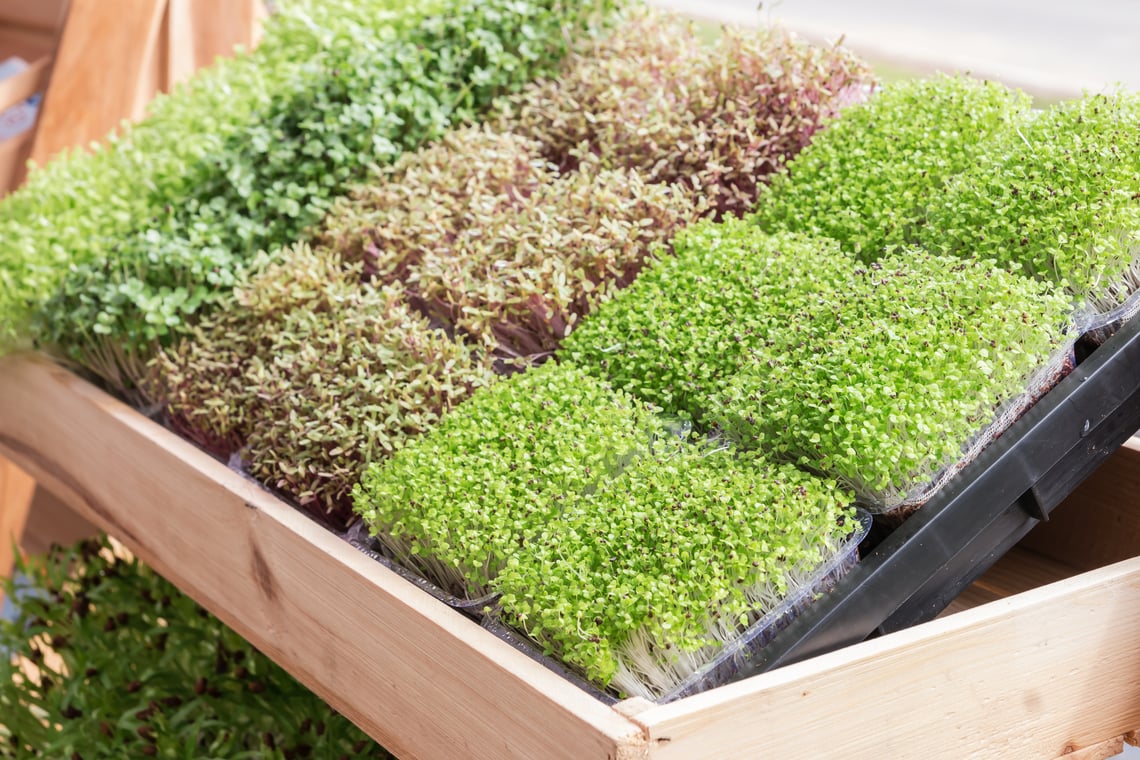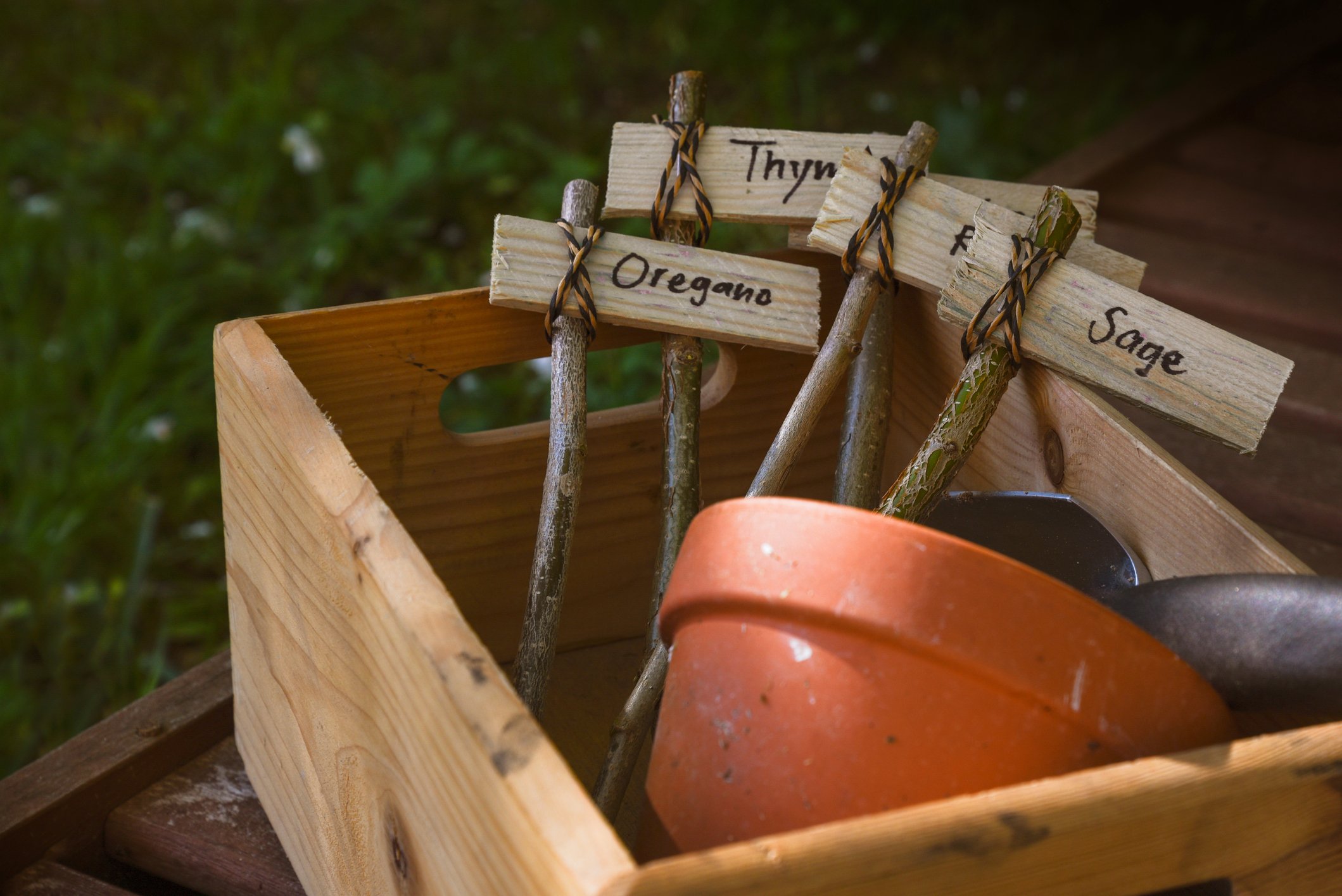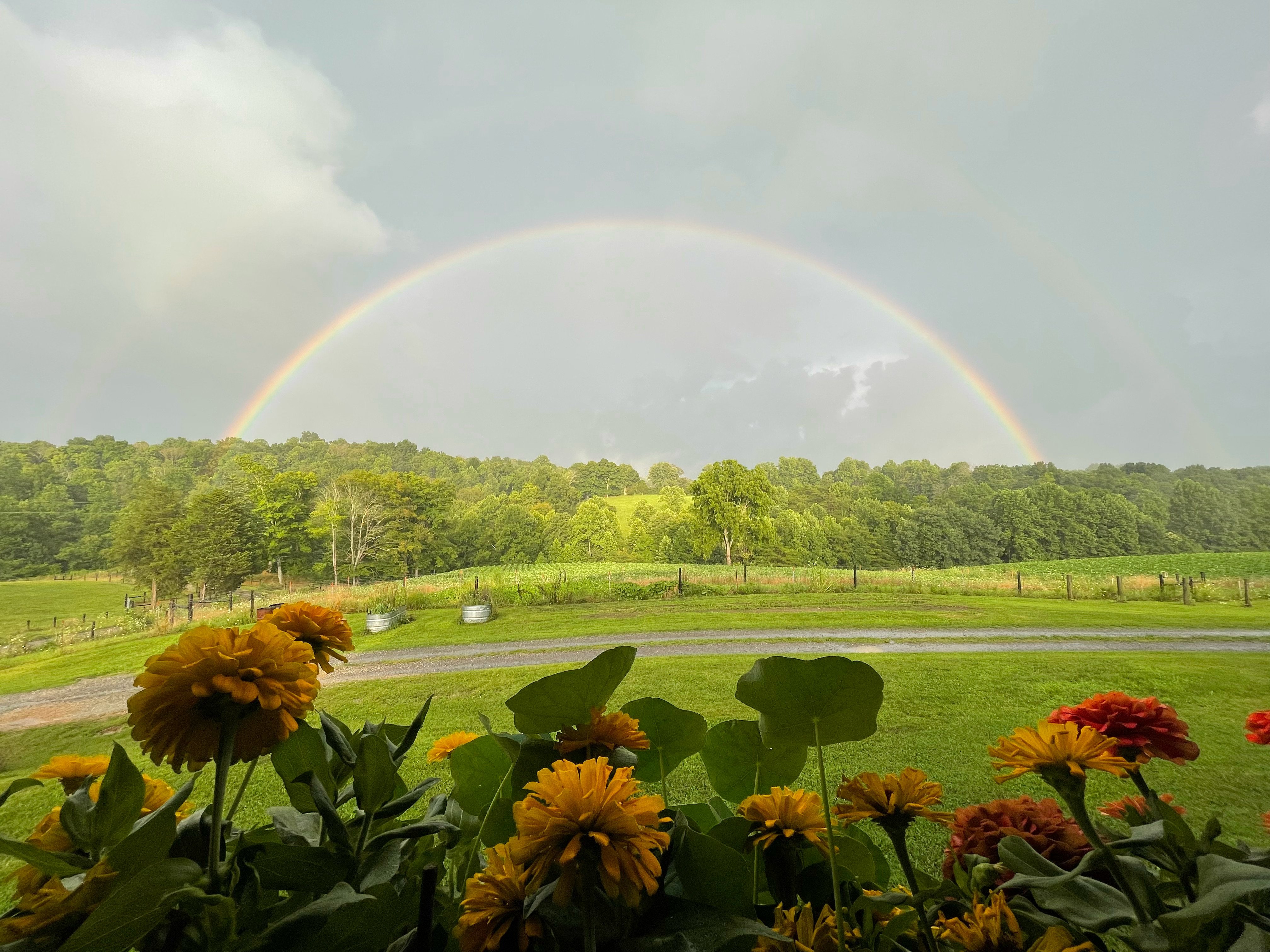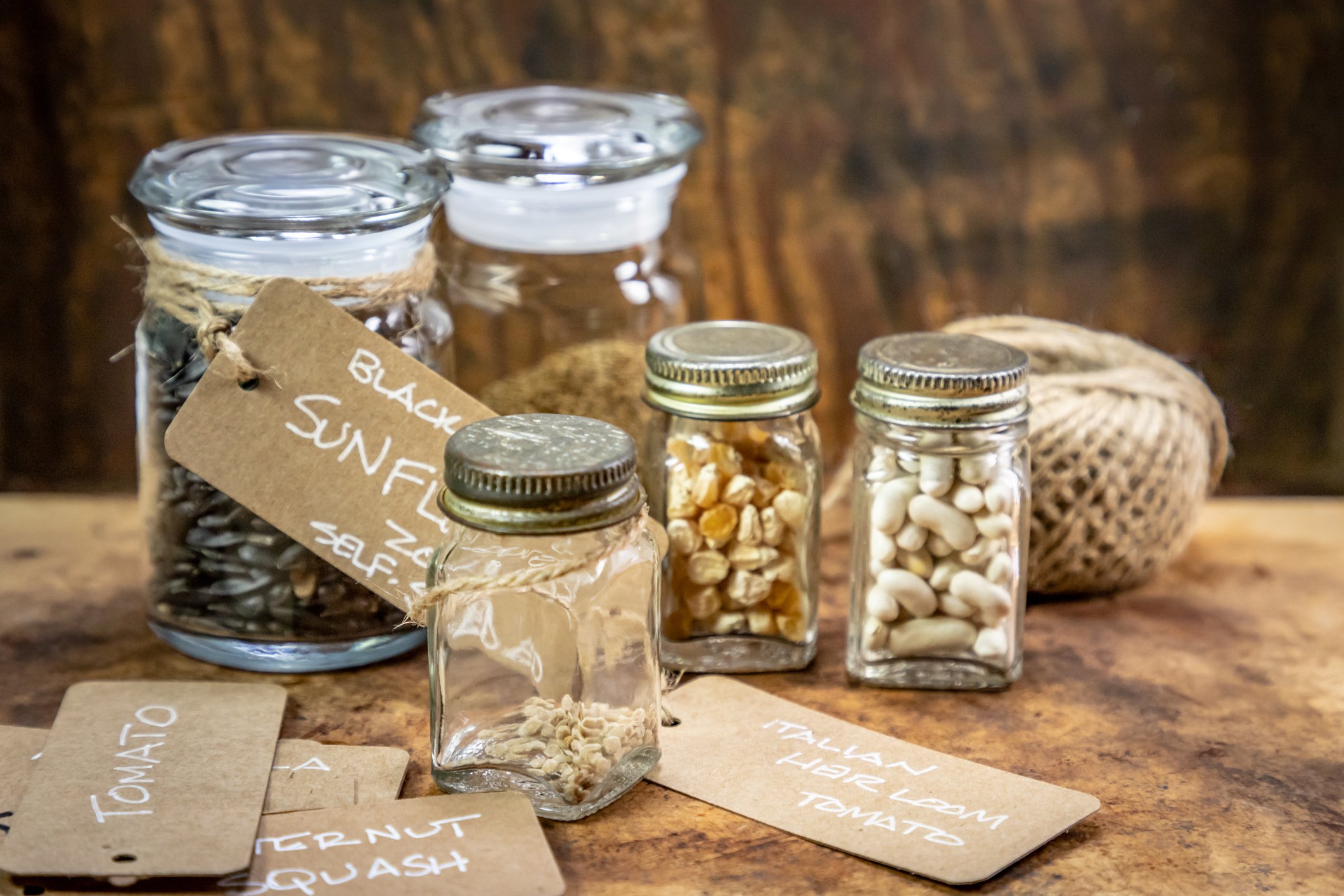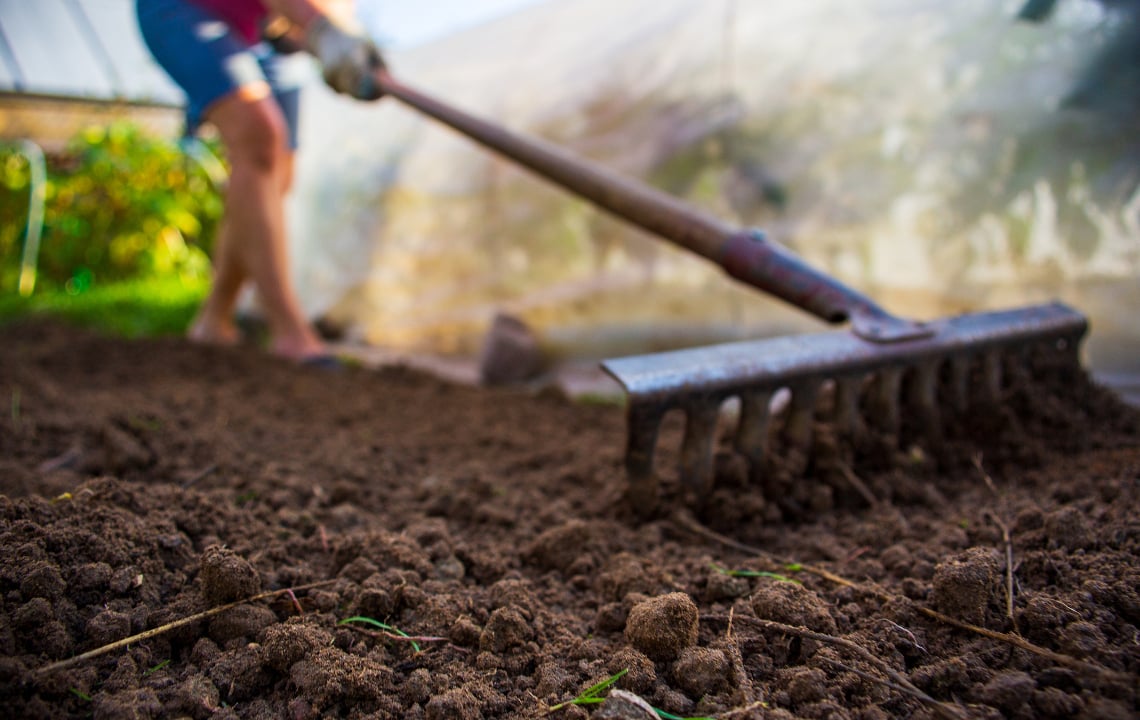Think you need large acreage to start a farm? This couple shares how they set up a successful organic microgreens business from their suburban Texas home (and they're thriving despite the economic downturn!).It was a Friday afternoon when I caught up with Eat Your Greens! Organic Farm co-founder, Christa Zuniga for a phone interview. “You may hear my kids in the background,” she told me, which made sense given this power couple runs a microgreens farm out of their home.
“I never imagined that at age 44, I’d be sitting at my local farmer’s market on the weekends selling microgreens.” she says. But, Christa and her wife April have created a legitimate business growing and supplying organic microgreens direct to their community; and they’re doing it all from their garage-greenhouse-conversion in suburban Texas.
If you’ve never heard of microgreens before, join the club. Much like perceptions about the now infamous superfood kale, Christa estimates at least 75% of the foot traffic at Frisco Fresh Market have either never heard of microgreens, or think they’re meant for garnish. No one has a clue there are studies showing they have four to 40 times the nutrients of the adult vegetable versions*.
Here’s how the Zunigas wound up becoming champions for microgreens farming on their small suburban lot.
A Health Crisis Sparked Their Quest For Natural Healing
Like many unexpected business ventures, theirs began with a health crisis which changed their lives forever.
Says Christa: “About 3 years ago my wife April, who’d always been pretty healthy, started getting a bunch of strange symptoms and suddenly couldn’t get up off the couch.”
April is General Manager of a large company and Christa is a stay-at-home mom (their family is pictured below), so the prospect of April being unable to work long-term could have posed a serious problem.

“We didn’t know what was going on, and the doctors we saw just said all her tests were “normal”; but we knew that wasn’t the case. So we started doing some research and learning about how to heal yourself with food, and decided to start a garden.”
In their quest for information, they learned about the nutritional benefits of microgreens — the young, sprouted seeds of various lettuce and vegetables.
“We watched a lot of YouTube videos and learned about all the health benefits and how their nutrients are more absorbable than supplements. So we decided, let’s try to heal this way.”
Christa explains that you don’t need much equipment to grow microgreens, so they found a large wire shelf on Facebook Marketplace, ordered some trays, got soil and seeds from their local big box store and set up a growing space in their dining room.
“We started growing for ourselves for 6 months and noticed an amazing difference in April’s health, and all of our health as a family.”
After seeing the change in April, their friends and family were eager to try their microgreens and encouraged them to share their harvests and newfound knowledge with the local community.
This was no longer a health experiment, April was getting better and, based on their experience, they had become passionate advocates for microgreens.
Setting up a Suburban Microgreens Farm
.jpg?width=1000&name=84639966_1031272120561821_4644212024803328000_o%20(1).jpg)
Unlike most of the farmers we’ve featured, the Zunigas don’t have a large piece of land. However, unlike other vegetable crops, acreage is not required when growing microgreens. Christa explains how they set up their suburban farming operation.
“We do not have a large property, but we have a garage that we’ve converted into a greenhouse and that’s our growing space. You need very little equipment and space for this, which is what made it doable for us.”
In addition to greenhouse space, here’s what they needed to start growing:
- NSF-certified racks (these are the silver, wire racks most of us use in our garages or basements)---”We found our first one on Facebook Marketplace for $50.00.”
- 10X20 Growing trays
- Full sunlight and/or shop lights
- OMRI-listed organic soil
- USDA-certified organic seeds
- Water
- City-approved food packaging (biodegradable, recyclable)
- Labels
That’s it!
Says Christa, “It was important to us to grow organic, which is why we use OMRI-listed organic soil and USDA-certified organic seed. We have to tend to the plants every day, just like you would on any farm. Most varieties take approximately 10 days to grow and we harvest every 2-3 days for our subscribers. We are also recognized by the state, city, county, and country as farmers so we can get our farming supplies tax-free as do other farms.”
Getting STarted at the Farmer’s Market and Online
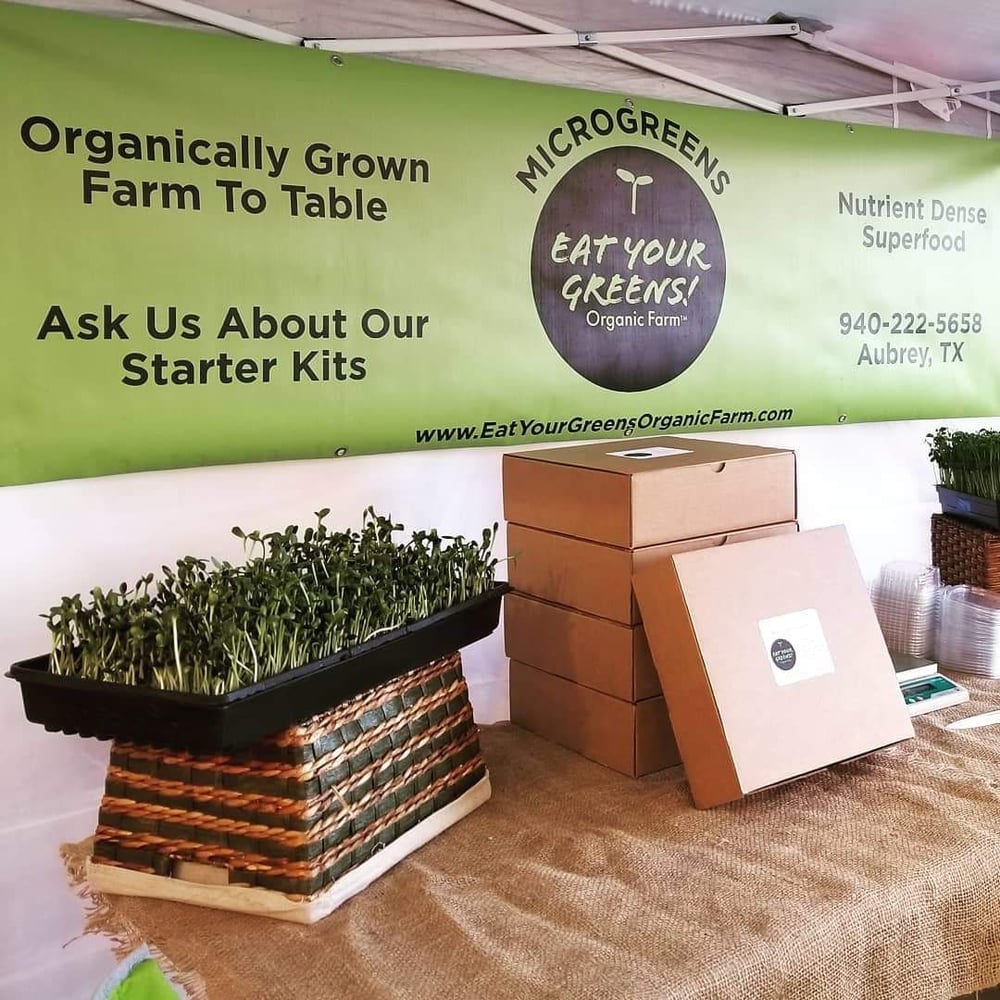
“Since we wanted to connect directly with the customers, we started out at the local farmer’s market in Frisco. We thought we’d make a couple hundred extra dollars, and then a few months later we turned our garage into a greenhouse and everything keeps growing and growing!”
Since most people aren’t familiar with microgreens, much of their time at the market is spent educating on the nutritional benefits of their greens — which Christa says is time well spent to spread the word.
The Zunigas are unique in their microgreens business model in that they sell direct-to-customer instead of to restaurants. Says Christa,
“There are about 6 microgreens companies in our general area, and we’re one of the only ones who don’t sell to restaurants, that we know of. Our goal is to spread the word about the healing benefits of these plants, not to sell them for garnish.”
How Microgreens Subscriptions Work
Their subscription model is similar to a CSA, but without contracts: customers place orders online which are grown-to-order and harvested the same day as delivery for optimal freshness and nutrition.
Christa explains, “We sell our subscriptions with 1 week in mind, which is about one ounce of microgreens a day per person for the full nutritional value; so that’s seven ounces a week or two people could do 14 ounces per week, or some people double it and freeze half to use in smoothies. Our pricing is set to be affordable for everyone. At the market we sell them at between $3-5 an ounce, and a subscriber can get that as low as $1.50 an ounce.”
They currently have 25 regular subscribers, in addition to their farmer’s market clientele, and plan on doubling that by this spring.
They also offer grow-it-yourself-starter-kits
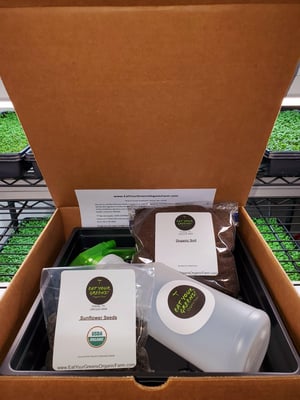
DIY enthusiasts can also choose to grow-their-own with a microgreens starter kit.
“Starter kits come with everything you need for your first grow and include the seeds, the soil, the trays and a spray bottle. Then, all you need is sunlight or an indoor light for about 12 to 16 hours a day because they’ll grow with any ambient light.”
As part of their commitment to spread the word about their experience with microgreens and healing, the Zunigas offer a free starter kit to those dealing with a critical illness. The details are on their website.
The Time Commitment
Microgreens farming may require little space, but once word gets out it can quickly become a full-time home-based business.
“It’s about a 40 hour a week business not including all the marketing. One person can definitely do it, but keep in mind if you’re doing subscriptions then you have to be more available for deliveries.
“We started out with just a couple shelves and now have five full racks going at all times. Here we are in our little 60 foot lot in the middle of suburbia with a farm, who’d have ever known!”
What They Wished They’d Known When Getting Started
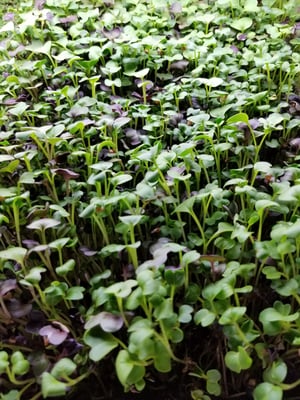 Christa had this advice for beginner microgreens growers based on their self-taught experience:
Christa had this advice for beginner microgreens growers based on their self-taught experience:
“Knowing what soil to use is important. When we first started we knew we wanted to grow organic but had no clue what type of soil to use. We first went after in-ground soil but it was full of wood chips, debris and rocks...which didn’t work out well for us. Then we finally found type of soil called container mix, potting soil also works if it is intended for food, which knowing this would have saved a lot of lost trays.”
Christa also recommends against buying supplies at big box stores, especially if you plan on growing for market or in bulk:
“The day we decided to grow I went to Home Depot and bought a bunch of packs of seeds and spent $50 for my first grow. For microgreens you need bulk seed (since you’re harvesting when the plants are just tiny shoots) which you want to buy online. If I had known right away how to find seeds and soil we would have saved a lot of time and money. But, trial and error helps with knowing what works best.”
“We learned a lot on YouTube, but everybody grows differently, has different opinions on things and will only share so much information. So, experience goes a long way. We’ve found growing in soil to be the most flavorful and organic way to grow microgreens, opposed to hydroponic. Because we use soil, we also compost our after-harvest trays with a local chicken farmer. Super healthy chickens!”
From Mysterious Illness They Found Higher Purpose
Microgreens farming isn’t just a family business or side-hustle to the Zunigas, it’s become their passion and brought them deep fulfillment and purpose.
“We don’t have to do this for financial gain,” Christa explains. “April has a great job and I get to stay at home with the kids, we own a home and live in suburbia...but it has become like a calling for us which means we do have to do this and we’re passionate about healing the world.
“It was unexpected, I don’t even know how to explain it — it just appeared! I never would have thought at 44 years old that I’d be sitting at a farmer’s market on the weekends selling vegetables, especially since I was raised on cake and Kool-Aid for breakfast. I was the unhealthiest of anyone else I knew, but here we are now, living the American Dream and it has all been the greatest blessing.”
Update: Since the COVID-19 crisis hit the United States Christa reports their sales have more than doubled as people are seeking creative ways to stay healthy: "It was crazy how it all happened, we got the word that our farmers market was closing and within a day people started looking for us and sharing the fact that we have such amazing nutrient-dense food. We have consistently been growing daily since. It's a true blessing to be able to grow and expand in times like these."
To learn more about the Zuniga family and Eat Your Greens Organic Farm in Aubrey, Texas (north of Dallas) visit them online at: eatyourgreensorganicfarm.com.
Feeling inspired to start growing on your rural land? Check out other success stories of small and large-scale farmers plus how-tos, in our Starting a Farm series.
*Source: https://agnr.umd.edu/news/mighty-microgreens


